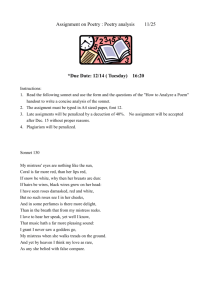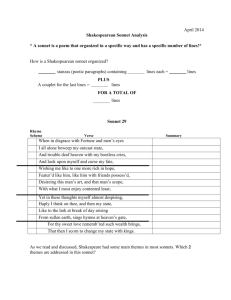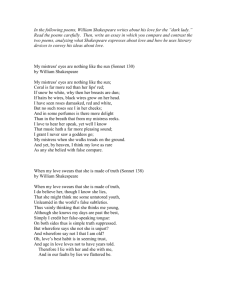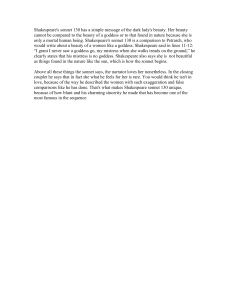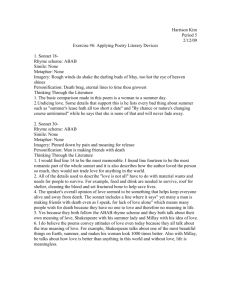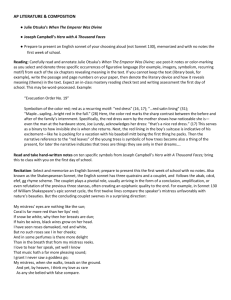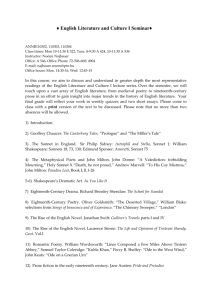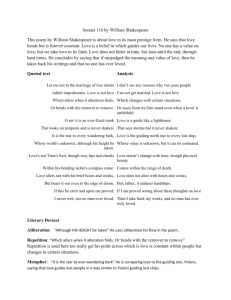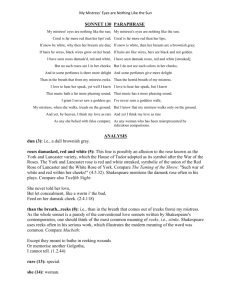Analyzing Sonnet 130
advertisement
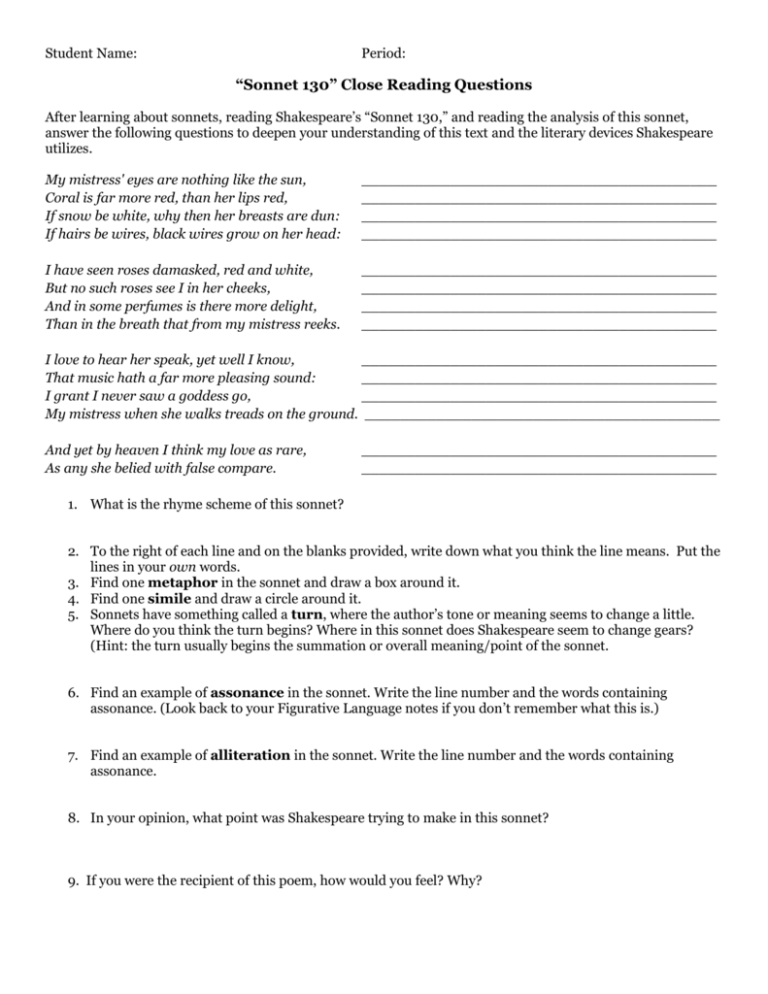
Student Name: Period: “Sonnet 130” Close Reading Questions After learning about sonnets, reading Shakespeare’s “Sonnet 130,” and reading the analysis of this sonnet, answer the following questions to deepen your understanding of this text and the literary devices Shakespeare utilizes. My mistress' eyes are nothing like the sun, Coral is far more red, than her lips red, If snow be white, why then her breasts are dun: If hairs be wires, black wires grow on her head: ________________________________________ ________________________________________ ________________________________________ ________________________________________ I have seen roses damasked, red and white, But no such roses see I in her cheeks, And in some perfumes is there more delight, Than in the breath that from my mistress reeks. ________________________________________ ________________________________________ ________________________________________ ________________________________________ I love to hear her speak, yet well I know, ________________________________________ That music hath a far more pleasing sound: ________________________________________ I grant I never saw a goddess go, ________________________________________ My mistress when she walks treads on the ground. ________________________________________ And yet by heaven I think my love as rare, As any she belied with false compare. ________________________________________ ________________________________________ 1. What is the rhyme scheme of this sonnet? 2. To the right of each line and on the blanks provided, write down what you think the line means. Put the lines in your own words. 3. Find one metaphor in the sonnet and draw a box around it. 4. Find one simile and draw a circle around it. 5. Sonnets have something called a turn, where the author’s tone or meaning seems to change a little. Where do you think the turn begins? Where in this sonnet does Shakespeare seem to change gears? (Hint: the turn usually begins the summation or overall meaning/point of the sonnet. 6. Find an example of assonance in the sonnet. Write the line number and the words containing assonance. (Look back to your Figurative Language notes if you don’t remember what this is.) 7. Find an example of alliteration in the sonnet. Write the line number and the words containing assonance. 8. In your opinion, what point was Shakespeare trying to make in this sonnet? 9. If you were the recipient of this poem, how would you feel? Why?
